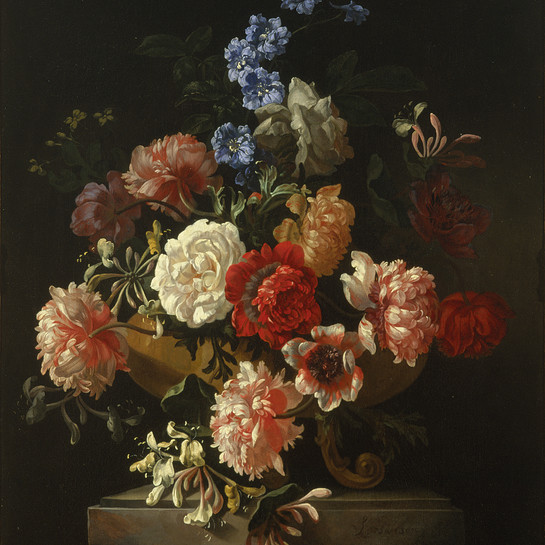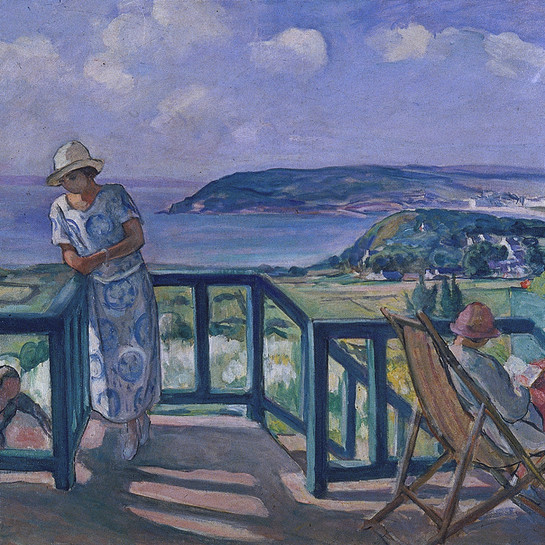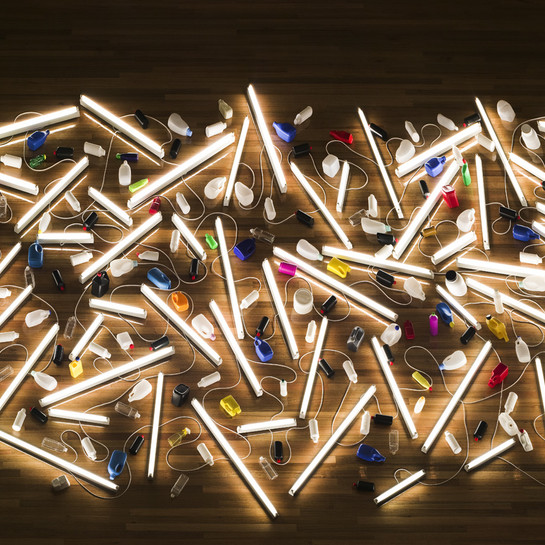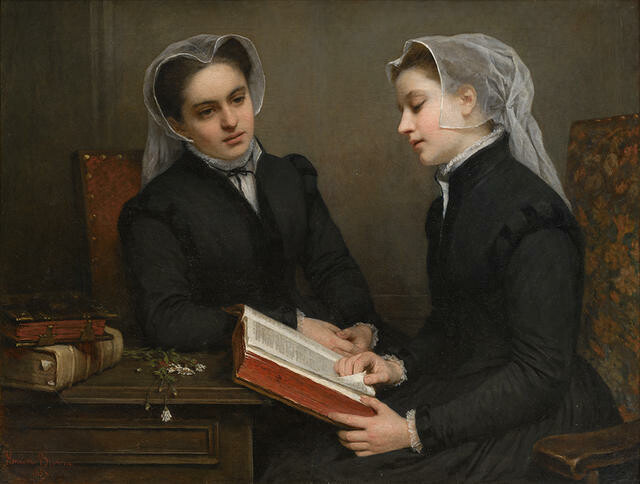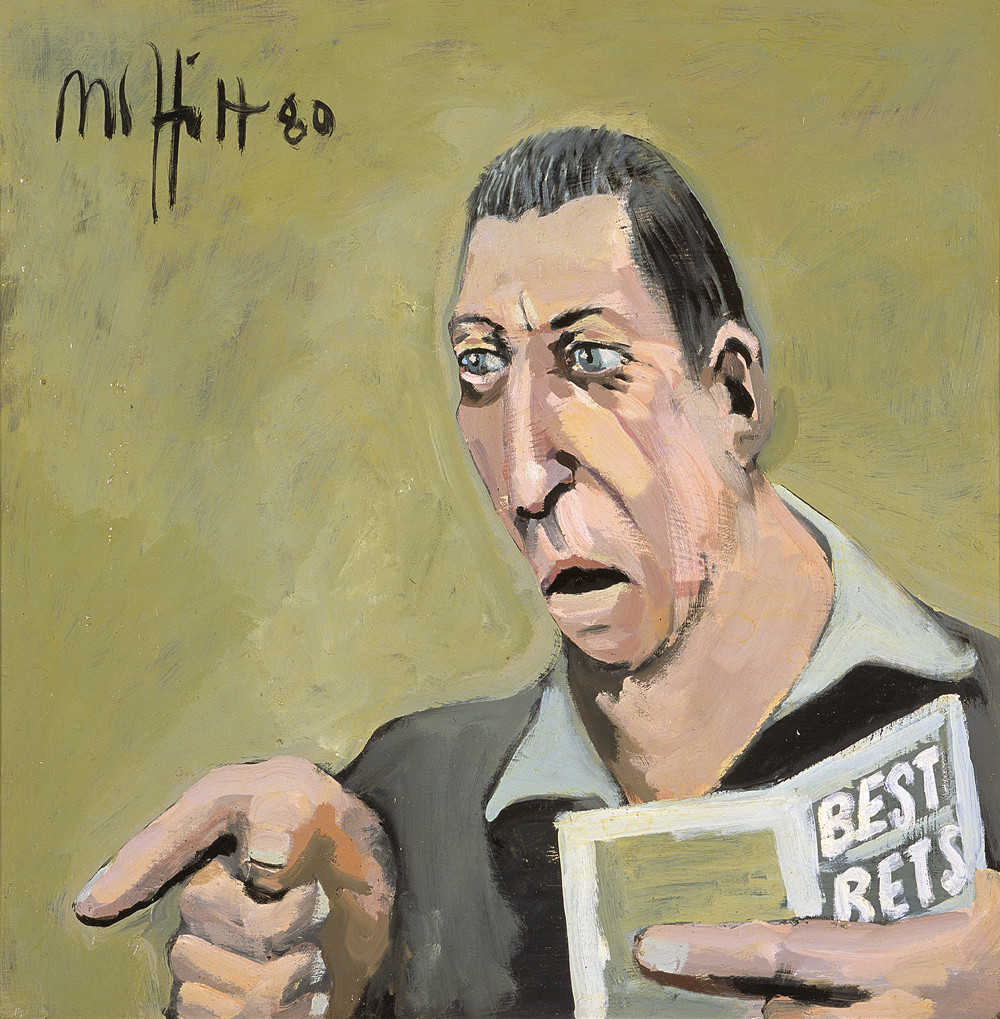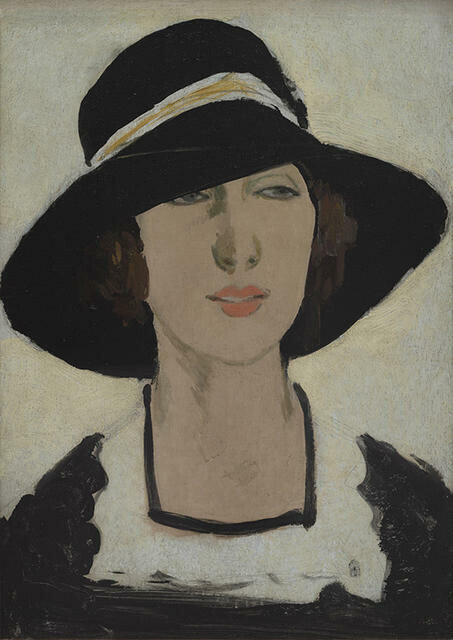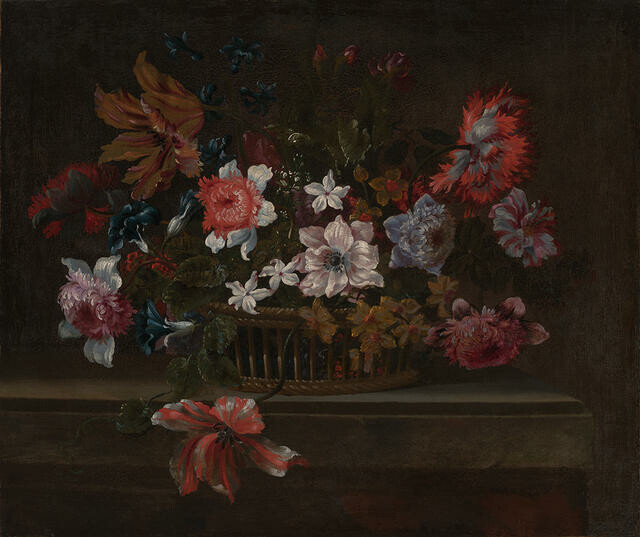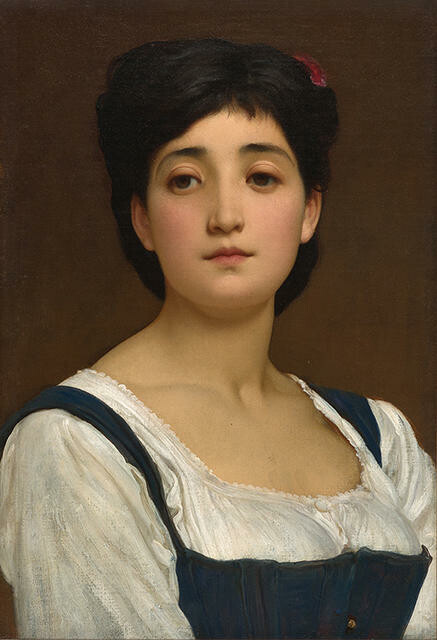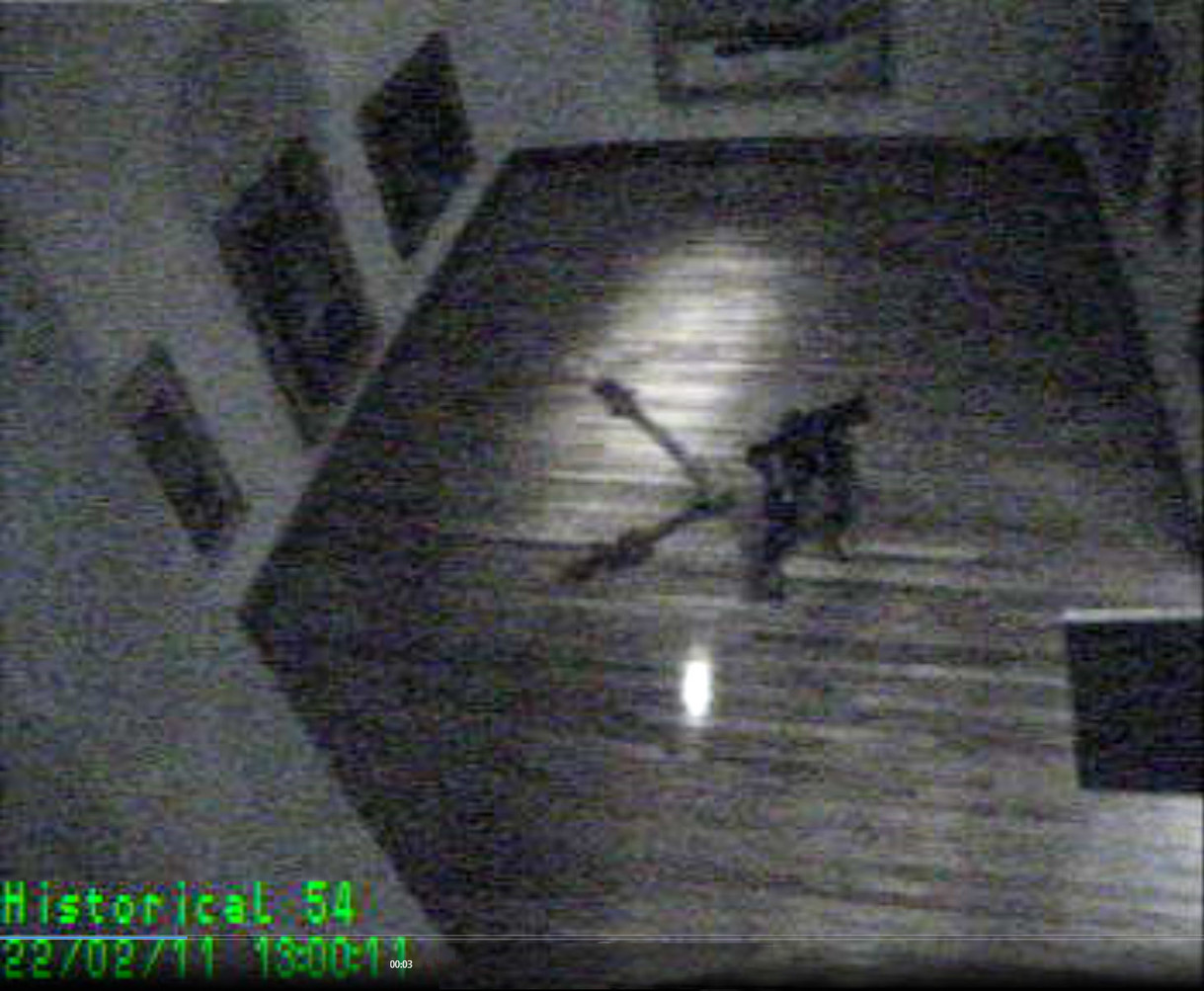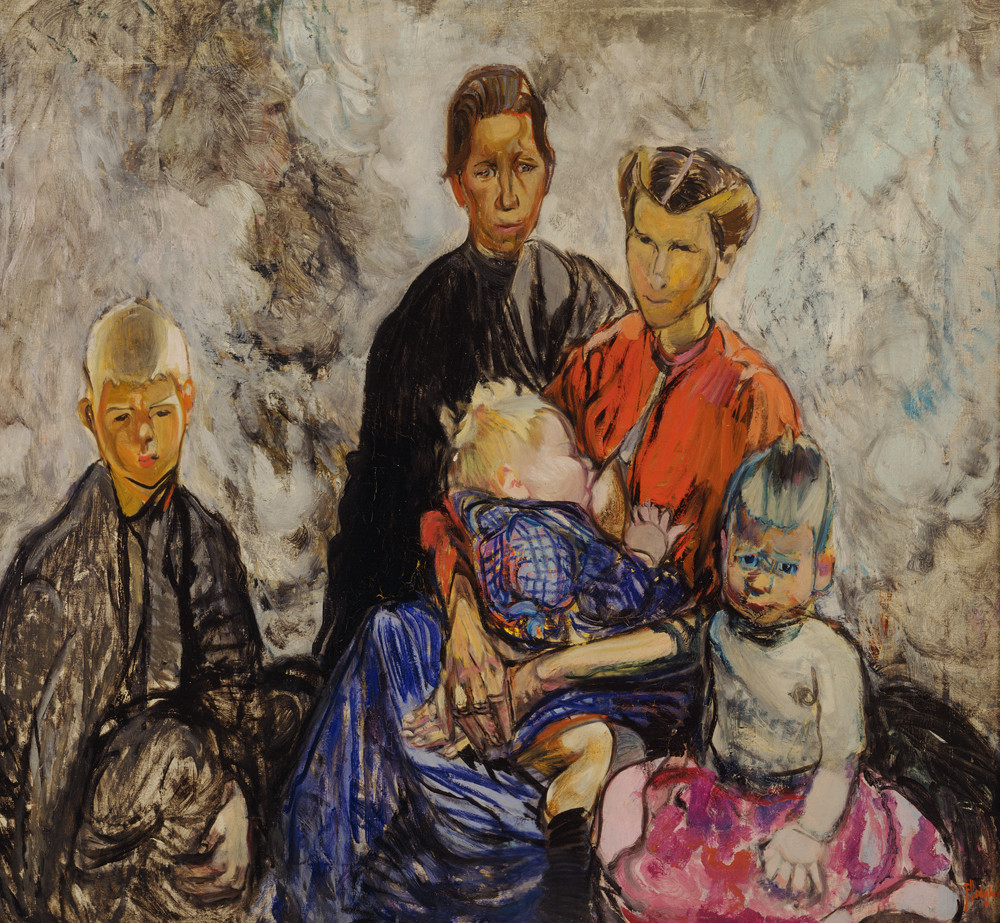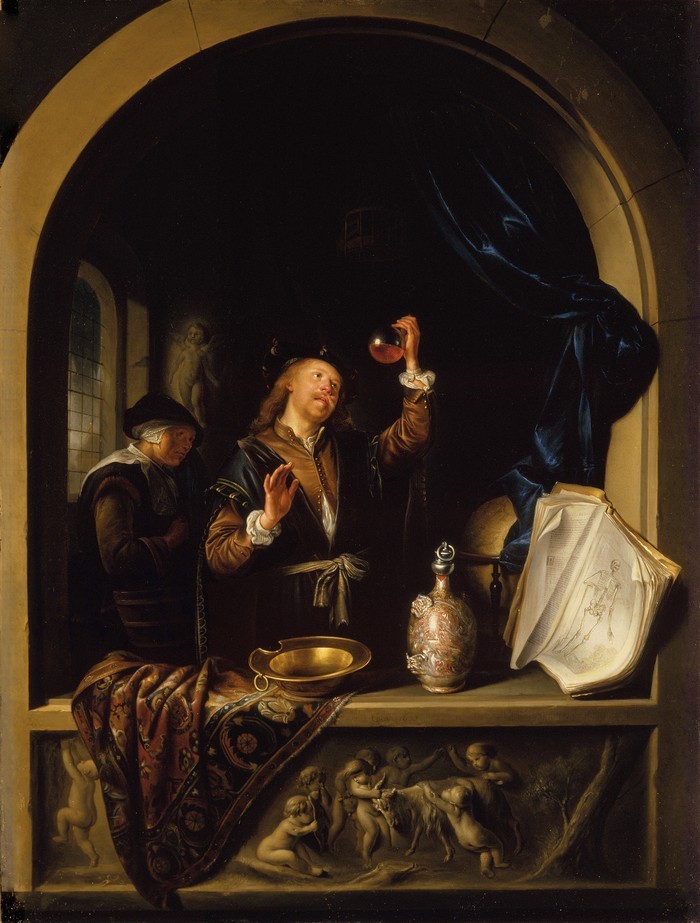Henriette Browne
France, b.1829, d.1901
La Lecture de la Bible
- 1857
- Oil on canvas
- Presented by R. E. McDougall, 1930
- 1280 x 1560mm
- 69/551
Tags: academicism, Bibles, black (color), bookbinding (process), bookmarks, books, chairs (furniture forms), floral patterns, flowers (plants), furniture, girls, headscarves, pairs, people (agents), reading, tables (support furniture), women (female humans), youth
The French artist Henriette Browne excelled at painting highly realist, representational narrative paintings and La Lecture de la Bible is one of her finest. Browne produced several portraits of religious devotees and the two young women in this painting are thought to be novices studying to enter a religious order. They are clearly virtuous – their austere black garments suggest a puritan character and the painting is also known as The Puritans. The withered flowers on the table are the most obvious narrative element in the painting, these are a vanitas symbol for the passing of time and the loss of youth. La Lecture de la Bible was first owned by Empress Eugénie, the wife of Napoléon III, and was presented to the Gallery by its major benefactor, Robert McDougall.
(New Dawn Fades, November 2018)
First exhibited at the Paris Salon in 1857 with the title 'Les Puritaines', this painting has for many years also been known as 'La Lecture de la Bible'.
Exhibition History
Treasury: a generous legacy, 18 December 2015 - 4 December 2016
A painter of religious and Orientalist themes, Sophie de Bouteiller was better known by the pseudonym Henriette Browne, under which name she exhibited this work at the Paris Salon (as Les Puritaines) in 1857. It was purchased there by Empress Eugénie, wife of Napoléon III; they lived with this painting while in lasting exile in England after the Emperor’s crushing defeat to Prussia in 1870.
Following Eugénie’s death in 1920 it was sold at Christie’s, London and went to a Sydney art dealer. After being shown in Dunedin at the 1925–26 New Zealand and South Seas Exhibition, it was purchased by Robert E. McDougall, donor of Christchurch’s first public gallery, and became part of his extraordinary civic gift.
Brought to light, November 2009- 22 February 2011
This exquisite example of French academic realism is all about purity. The virtuous young women are depicted conscientiously reading from the Bible, their moral character unquestionable when compared with that of the young women who appear in Doubts and In the wizard’s garden. Their austere black garments suggest upright, puritan character. The withered flowers on the table are a vanitas symbol for the passage of time, alluding to the brevity of youth's fresh bloom.
This work is an example of academic realism. The finish and concealed brushstrokes are common to the 19th century academic practice which influenced Henriette Browne. Moral improvement through reading the Bible is the message of the painting. Browne specialised in moralistic figure works, often of women in domestic settings. This work was painted early in her career and was exhibited at the 1858 Salon as The Puritans. La Lecture de la Bible has the distinction of being the first painting acquired by the Robert McDougall Art Gallery. It was donated by Robert McDougall himself to form the nucleus of the Gallery’s collection. Born Sophie Bouteiller, she exhibited under the pseudonym Henriette Browne because painting was not considered a suitable occupation for young women of the upper classes. Browne began to show her paintings publicly in the Paris Salon in 1853 and continued to exhibit until 1879. She was one of three female founder members of the Société Nationale des Beaux-Arts, Paris, in 1862. (Opening Gallery hang, May 2003)
This double portrait is an accomplished example of 19th century French academic realism. The freshness of the young complexions is emphasised by the sombre blacks of the garments in which the brushwork and subtle colour modulations are handled with great skill. The Bible, open in the woman's hands, is an important focus in the scene, while the wilting flowers on the table allude to the passing of time and the fading of youth's fresh beauty.
Sophie de Bouteiller was the daughter of a French count and the member of an ancient aristocratic family. She trained as a painter and, in 1853, shortly before painting this work, married Jules de Saux, a diplomat in the Ministry of Foreign Affairs. The same year she began to exhibit in the French Salon and to sign her work with the pseudonym 'Henriette Browne', a name taken from an 18th century Irish ancestor who had settled in Brittany. De Bouteiller specialised in figure works, often of women in domestic settings or of oriental subjects that were developed from studies and sketches made on journeys to the East with her diplomat husband. She continued to exhibit until 1879, the year in which her husband died.
This work was purchased in Paris by the Empress Eugénie and taken to England when the Empress and Napoleon III settled in Chiselhurst. It was sold after her death and subsequently purchased from the 1925 - 26 Dunedin South Seas Exhibition by Robert McDougall who presented it to the Gallery's collection in 1932.
(Label dates from before 2003)


